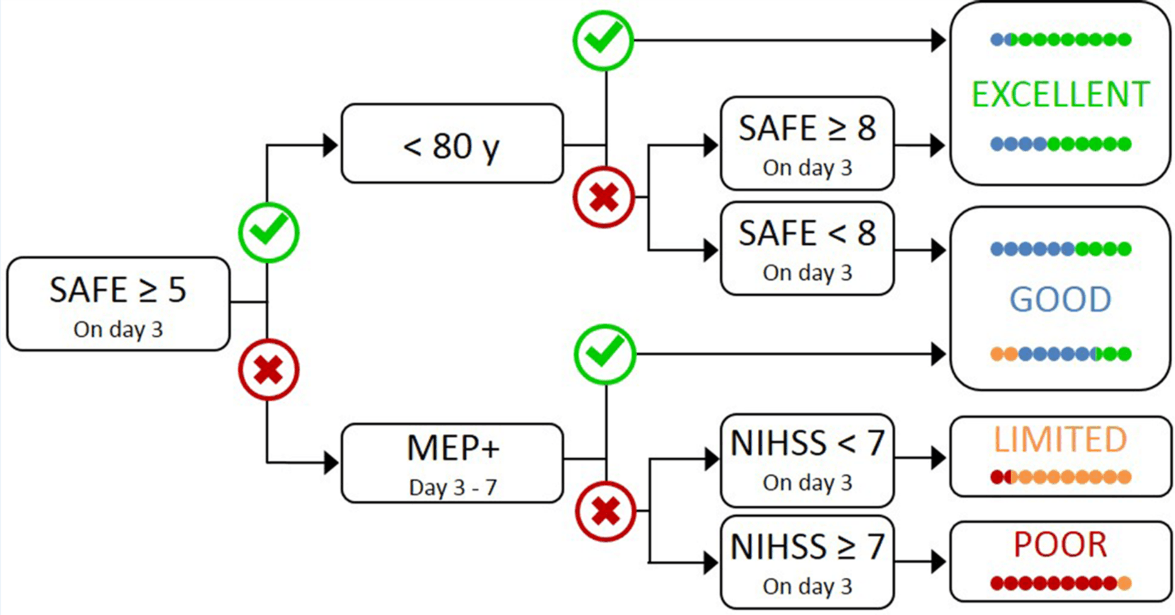PREP2 stands for Predict REcovery Potential, and is a revised prediction tool for predicting upper limb functional outcomes after stroke.
PREP2 is currently being used in a research context. We hope that by establishing the evidence for this tool, clinicians will be able to use it to reduce uncertainty about recovery after stroke.
An open access PDF of the PREP2 journal article can be accessed and downloaded from here.
PREP2 needs to start within 3 days of the stroke, and requires 3 simple steps. Most people will only need the first step as not all steps have to be completed for every patient in order to make a prediction. A prediction can be made for approximately two-thirds of patients using just the first step. The tests are started within the first three days after stroke and can tell us how well the patient’s hand and arm are expected to work within 12 weeks after stroke.
A one page summary of PREP2 in clinical practice can be downloaded, shared and cited here.
Here’s how to use PREP2
O How PREP2 works
Ο PREP2 in clinical practice
Ο Delivering PREP2 predictions
Ο Case examples
Ο PREP2 in clinical research
Ο FAQs
Here are some resources to support PREP2 in clinical practice
Ο PREP2 rationale
Ο PREP2 Prediction Information
Ο Home exercise programme
Ο TMS instructions for PREP2
Ο TMS safety checklist
Ο Publications
What are the benefits of PREP2?
PREP2 is designed to aid the stroke rehabilitation process by:
- Identifying patients with potential for good outcomes that might otherwise go unrecognised
- Setting individual rehabilitation goals and plans
- Managing the expectations of patients, their families, and health professionals
PREP2 is an efficient and economical system. It starts with a bedside clinical assessment and moves on to more complex assessments only for some patients. It also ensures that time and effort spent on rehabilitation is tailored to the patient.
PREP2 can also be used for stratification in clinical trials by identifying patients that are more or less likely to respond to new upper limb therapies.


